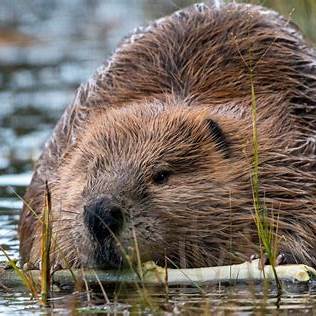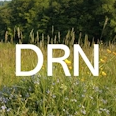Beavers in the UK: Why They’re Essential for Habitats & Flood Control
Beavers in the UK: The Complete Guide to Reintroduction, Habitat Benefits, and Conservation
Beavers (Castor fiber) have captured the UK’s imagination in recent years. Once hunted to extinction in the 16th century for their fur, meat, and castoreum, these extraordinary ecosystem engineers are now making a comeback. From river valleys in Devon to wetlands in Scotland, beavers are reshaping landscapes, creating wildlife-rich wetlands, and helping us adapt to climate change.
This guide explores everything you need to know about beavers in the UK: their history, biology, behaviour, reintroduction projects, ecological benefits, and the challenges of living alongside them.
A Brief History of Beavers in the UK
- Native species: The Eurasian beaver (Castor fiber) once thrived across Britain.
- Extinction: By the 1500s, they were wiped out due to overhunting.
- Reintroduction: Legal reintroductions began in Scotland in 2009 (Knapdale), followed by licensed releases and escapes in Devon, Cornwall, and beyond.
- Legal status: As of 2022, beavers in England are a legally protected species, recognising their role as a keystone species.
In February 2025, the UK government introduced a new licensing scheme that for the first time in centuries allows beavers to be released into the wild under licence in English river catchments — moving beyond just enclosed or trial populations. GOV.UK+1
What Do Beavers Look Like?
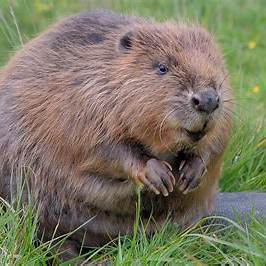
- Size: 18–30kg, making them the UK’s second-largest rodent after the capybara globally.
- Appearance: Stocky bodies, large orange teeth (for gnawing wood), webbed hind feet, and a distinctive flat, scaly tail used for balance, swimming, and fat storage.
- Diet: Strictly herbivorous, feeding on willow, birch, aspen, and aquatic plants. They do not eat fish.
Beaver Behaviour and Ecology
- Lodges & burrows: Beavers build lodges from sticks and mud, or burrow into riverbanks.
- Dams: Where water is too shallow, beavers build dams to raise water levels. These structures slow water flow and create ponds.
- Territorial: Beavers are highly territorial and mark boundaries with scent mounds.
- Nocturnal: Most active at night, particularly around dusk and dawn.
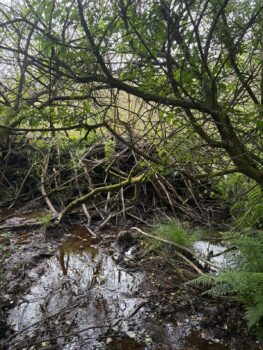
Where Are Beavers Found in the UK Today?
- Scotland: Now established in the Tay and Forth catchments. Populations expanding naturally.
- England: Devon’s River Otter population became the first officially sanctioned wild population in 2020. Other licensed releases have followed, including in Cornwall, Kent, and the Forest of Dean.
- Wales: Small-scale trials and feasibility studies ongoing.
- Northern Ireland: No wild populations yet, though discussions are emerging.
Why Beavers Are So Important
Beavers are often called “nature’s engineers” because of their ability to reshape landscapes in ways that benefit countless species and ecological processes.
1. Habitat Creation
- Beaver ponds and wetlands provide homes for amphibians, fish, birds, invertebrates, and plants.
- Standing deadwood from felled trees supports fungi, mosses, and beetles.
2. Flood Mitigation
- Beaver dams slow down water flow, spreading it across floodplains.
- This reduces downstream flooding during heavy rains, protecting communities.
3. Drought Resilience
- Beaver-created wetlands store water, maintaining base flows during dry periods.
- Vital in the face of more frequent droughts linked to climate change.
4. Water Quality Improvement
- Sediments and pollutants are trapped in beaver ponds.
- Cleaner water downstream benefits people and wildlife.
5. Carbon Storage
- Wetlands created by beavers capture and lock away carbon in soils and sediments.
- This makes them allies in the fight against climate change.
6. Boosting Biodiversity
- More species thrive in beaver-modified landscapes than in straightened, drained rivers.
- Examples: kingfishers, dragonflies, otters, snipe, frogs, and bats all benefit.
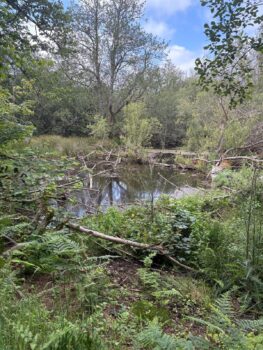
Common Concerns About Beavers
While overwhelmingly positive, beaver reintroduction does raise challenges:
- Tree felling: Beavers cut down trees, though usually willow, alder, and birch that readily regrow.
- Flooding of farmland: Beaver dams can back up water onto fields, sometimes causing conflicts.
- Management: In some cases, flow devices, tree guards, or controlled relocation are used to balance human and beaver needs.
In England and Scotland, management frameworks now allow farmers and landowners to access support and advice where beavers cause issues.
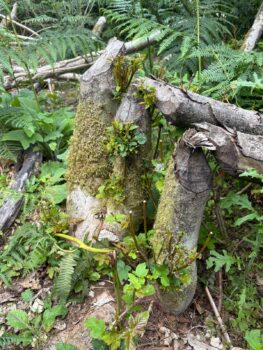
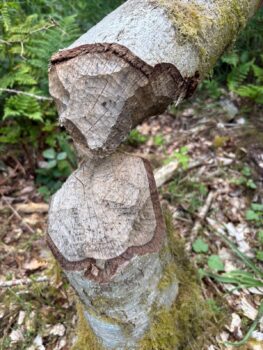
While these concerns are real, they’re not necessarily negative. Tree felling, for example, is part of a natural cycle that encourages coppice regrowth, lets in more sunlight, and creates diverse woodland habitats for birds, insects, and wildflowers. In Devon’s River Otter Beaver Trial, researchers found that felled willow and alder quickly resprouted, creating denser cover and more structural diversity for wildlife.
Flooding of farmland, though challenging in certain areas, also restores natural floodplains, recharges soils, and creates wet meadows that benefit both biodiversity and grazing. At trial sites, land previously seen as marginal became valuable wildlife habitat, attracting amphibians, dragonflies, and wading birds such as snipe and teal.
Even the need for management—such as tree guards, flow devices, or occasional dam modification—can be seen as a chance for people to reconnect with their landscapes, actively shaping coexistence with wildlife rather than excluding it. In the River Otter catchment, low-cost interventions allowed beavers and farmers to thrive side by side, with evidence showing flood risk reduction downstream and increased water storage during droughts.
In many cases, what seems like a problem at first glance is actually a process of ecological renewal that brings long-term resilience, productivity, and new opportunities for people and wildlife.
Beavers and People: Coexistence in the UK
Successful coexistence involves:
- Tree protection: Using wire mesh around valued trees.
- Flow devices: Pipes through dams to control water levels.
- Buffer zones: Creating space for wetlands to form along rivers.
- Partnerships: Local wildlife trusts, Natural England, and landowners working together.
Beavers in Devon and Cornwall
The River Otter Beaver Trial in Devon was the UK’s most influential reintroduction project. Over five years, it proved that beavers bring more benefits than costs, leading to their legal recognition as a native species.
Now, more projects are taking place across Cornwall and the South West, with farmers, community groups, and NGOs working to bring back these keystone species to suitable catchments.
The Future of Beavers in the UK
- Expansion: Populations are spreading naturally, supported by government policy and public enthusiasm.
- Nature recovery: Beavers are central to rewilding efforts, helping restore wetlands, reduce flooding, and increase biodiversity.
- Community involvement: Many projects rely on local volunteers, citizen science, and public engagement to monitor and celebrate the return of beavers.
Key Takeaways
- Beavers are a native, protected species in England and Scotland.
- They are ecosystem engineers that transform degraded rivers into thriving wetlands.
- Benefits include flood prevention, cleaner water, drought resilience, carbon storage, and biodiversity gains.
- With careful management, beavers and people can thrive side by side.
Beavers and Rewilding Projects in Devon & Cornwall
At Sasaquatics, we help landowners, farmers, and communities design wetlands and ponds that mimic the benefits of natural beaver engineering. By integrating water management, habitat creation, and rewilding principles, we can achieve the same ecological resilience while supporting local livelihoods.
👉 Get in touch today to explore how your land could benefit from beaver-inspired rewilding in Devon and Cornwall.
We’re fortunate to have some fantastic local projects showcasing the power of rewilding. One we’d highly recommend is Moor Barton, where beavers have transformed a small stream into a thriving wetland habitat. You can read more in our blog post, or head straight to their website to plan your visit
Frequently Asked Questions about Beavers in the UK
Are beavers native to the UK?
Yes. The Eurasian beaver (Castor fiber) is native to the UK but was hunted to extinction in the 1500s. Reintroduction projects in Scotland and England have restored wild populations.
Where can I see beavers in the UK?
Beavers are now found in Scotland’s Tay and Forth catchments, on Devon’s River Otter, and in several licensed projects in Cornwall, Kent, and the Forest of Dean.
Do beavers eat fish?
No. Beavers are strictly herbivores. They eat tree bark, leaves, twigs, and aquatic plants — never fish.
How do beavers help the environment?
Beavers build dams and wetlands that slow water flow, reduce flooding, store water in droughts, filter pollution, and create habitats for wildlife such as kingfishers, dragonflies, and amphibians.
Are beavers protected in the UK?
Yes. In Scotland and England, beavers are now a legally protected species. This means they cannot be killed or disturbed without a license, though management options exist for conflict situations.
